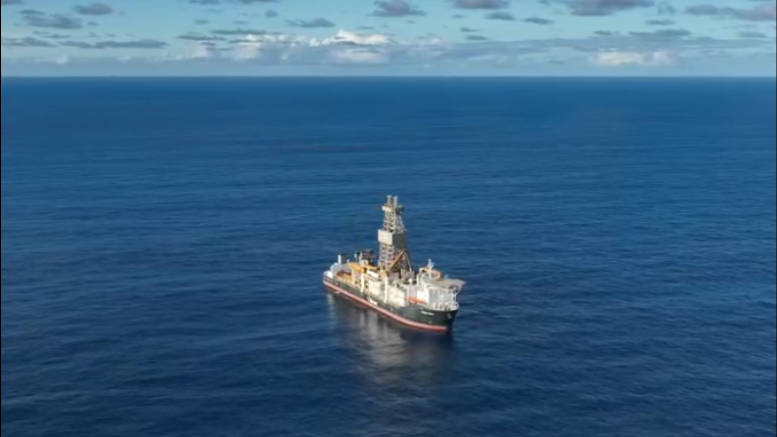The Metals Company (NASDAQ: TMC) is under fire from three civil society groups for its deep sea mining project in the Clarion Clipperton zone of the Pacific Ocean between Mexico and Hawaii.
Deep Sea Mining Campaign (DSMC), The Ocean Foundation (TOF), and Blue Climate Initiative (BCI) have filed a formal complaint with the United States Securities and Exchange Commission (SEC) against TMC. They accuse the company of misleading investors, government officials and the public through misrepresentations and omissions.
They claim a pattern of overly optimistic and deceptive shareholder communications regards TMC’s financial forecasts, the feasibility of the mining operation, the level of demand for the battery metals that would be recovered and the company’s environmental and socially responsible efforts. Furthermore, TMC is accused of under-reporting the opposition to its plans and its “dubious” claims about using renewable power in their processes.
The filing comes as scientists said they discovered that nodules in the same sea floor area that TMC wants to mine produce oxygen. The findings, published Monday in the journal Nature Geoscience, raise new concerns about the risks of deep-sea mining. Perhaps ironically, TMC helped fund the scientific work.
Shares of The Metals Company fell 8% on Tuesday in New York to close at US$1.20 apiece. The company has a market capitalization of $383.1 million.
Oxygen in the dark
The team, led by professor Andrew Sweetman at the Scottish Association for Marine Science, found that oxygen is produced in complete darkness about 4,000 meters below the ocean’s surface. It was previously thought that only living organisms, such as plants and algae, could use energy to create the planet’s oxygen through photosynthesis, which requires sunlight.
“For aerobic life to begin on the planet, there had to be oxygen, and our understanding has been that Earth’s oxygen supply began with photosynthetic organisms,” Sweetman said.
“But we now know that there is oxygen produced in the deep sea, where there is no light. I think we, therefore, need to revisit questions like: where could aerobic life have begun?”
The mechanism behind this oxygen production remains a mystery.
Sweetman and his collaborators first noticed something amiss in 2013 while studying seafloor ecosystems in the Clarion–Clipperton Zone. Their instruments recorded increases in oxygen in the deep water when there shouldn’t have been any, a finding repeated in 2021 and 2022.
“I suddenly realized that for eight years I’d been ignoring this potentially amazing new process, 4,000 meters down on the ocean floor,” Sweetman said.
The amounts of oxygen produced were higher than those seen in algae-rich surface waters. None of the other regions surveyed contained polymetallic nodules, suggesting that these rocks are essential in producing this “dark oxygen,” the scientist said.
Metals such as cobalt, nickel, copper, lithium, and manganese contained in the nodules are in high demand for solar panels, electric car batteries, and other green technologies. Scientists estimate that mining the seabed could provide up to 45% of all the world’s critical metal needs by 2065.
Last month, TMC and SGS Canada successfully produced cobalt sulphate from deep seafloor polymetallic nodules.


It is SOP for anti-mining groups to harass mining projects through the securities regulatory regime. Rather than state their case openly – “here is a project that may harm the environment/displace local people/upset the local economy” – the NGOs cloak it in factitious concern for investors. Bad faith I’ve come to expect.
I have my own doubts about marine mining’s possible impact on investors, but they don’t rest on environmental impact. Can an industry with a long history of cost overruns and project failures ever make a buck on this? Sci-fi isn’t real life.